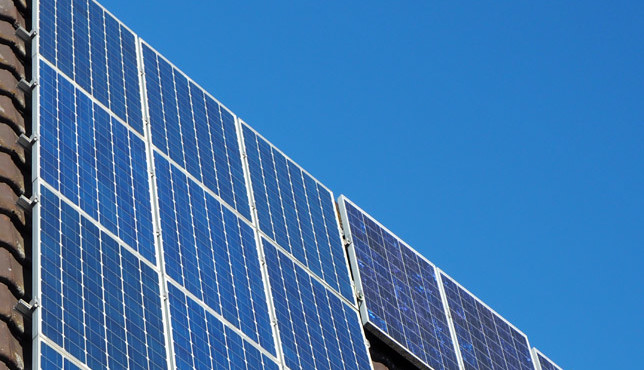Solar paint converts sunlight to hydrogen
June 21, 2017
on
on

Researchers at the RMIT University in Melbourne (Australia) have developed a paint which is able to absorb water vapor in the atmosphere and split it to form hydrogen. The hydrogen is generated directly from solar energy, which is not only a clean source of energy but also easily storable.
The paint contains a new material which is highly hygroscopic like silica gel and absorbs water from the air. Unlike silica gel, however this new material called synthetic molybdenum-sulphide also has semi-conductor properties which catalyses the splitting of water atoms into hydrogen and oxygen.
According to researcher Torben Daeneke, titanium oxide particles were added to the mixture, resulting in a light-absorbing paint that directly produces hydrogen from sunlight and humid air. Titanium oxide is a safe and inexpensive white pigment, which is already widely used in paints. As a result, any sunny surface can be easily converted into a hydrogen-producing panel by covering it with a lick of paint. This new development clearly has a number of advantages: the technology is simple and there is no requirement for specially purified water. Normal environmental levels of humidity are also sufficient for the process. This means that the paint works not only in coastal regions but also far into the interior regions of a country. The key advantage of this new technology is its simplicity; solar energy can be directly converted into hydrogen and no expensive batteries are required for energy storage.
The paint contains a new material which is highly hygroscopic like silica gel and absorbs water from the air. Unlike silica gel, however this new material called synthetic molybdenum-sulphide also has semi-conductor properties which catalyses the splitting of water atoms into hydrogen and oxygen.
According to researcher Torben Daeneke, titanium oxide particles were added to the mixture, resulting in a light-absorbing paint that directly produces hydrogen from sunlight and humid air. Titanium oxide is a safe and inexpensive white pigment, which is already widely used in paints. As a result, any sunny surface can be easily converted into a hydrogen-producing panel by covering it with a lick of paint. This new development clearly has a number of advantages: the technology is simple and there is no requirement for specially purified water. Normal environmental levels of humidity are also sufficient for the process. This means that the paint works not only in coastal regions but also far into the interior regions of a country. The key advantage of this new technology is its simplicity; solar energy can be directly converted into hydrogen and no expensive batteries are required for energy storage.
Read full article
Hide full article


Discussion (1 comment)